Publications (1959-64)
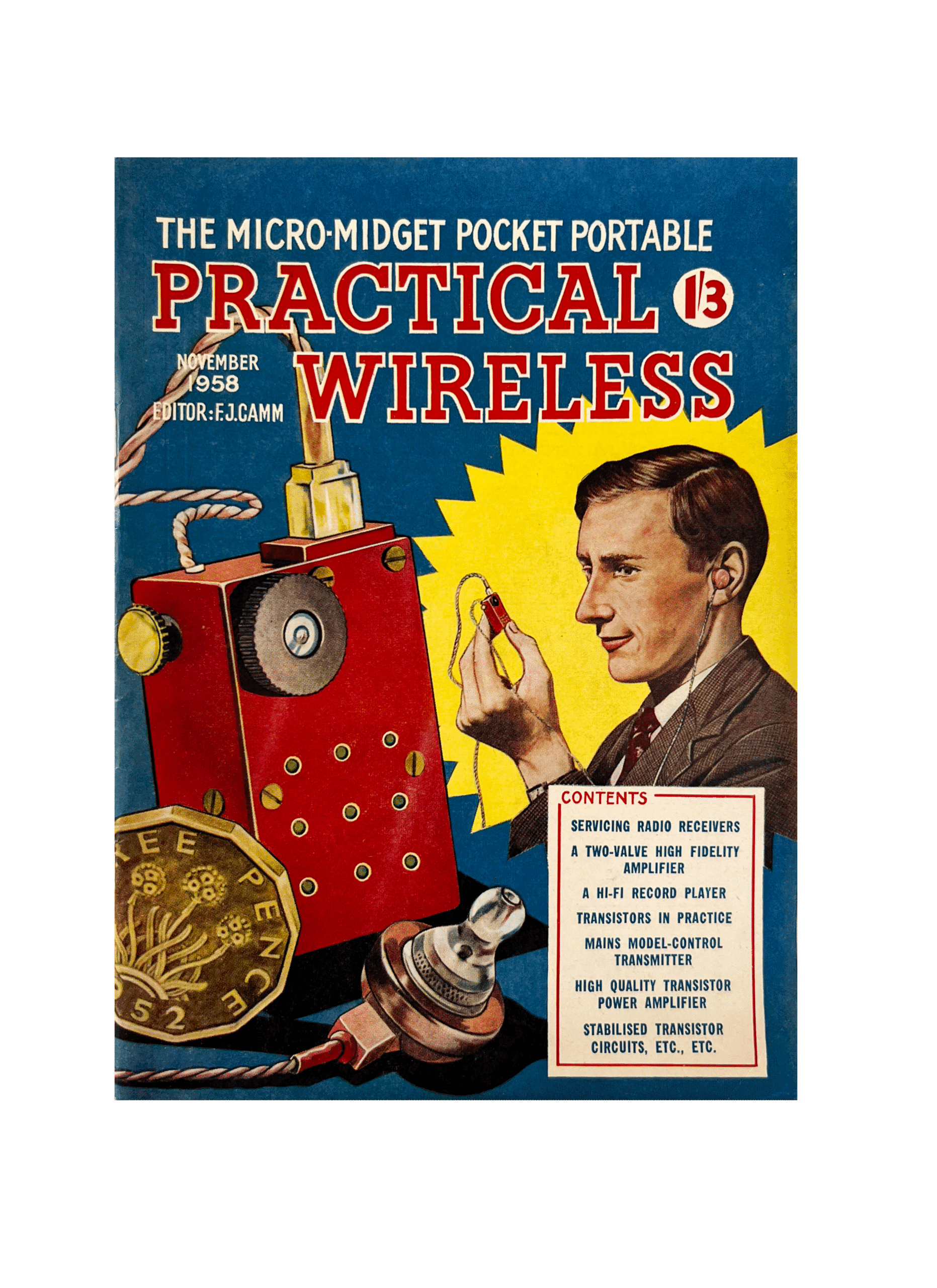
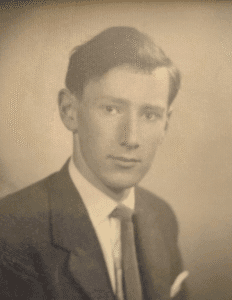
Clive Sinclair, early life portrait, late 1950s.
Photograph: Courtesy of the Sinclair family.
Publication: Practical Wireless nº 623, “The Micro-Midget Pocket Portable”
Edition: 1st, 1958
General Editor: F. J. Camm (Frederick James Camm)
Practical Wireless was a monthly British magazine for radio and electronics enthusiasts. Although there is no direct reference to Clive Sinclair himself, this issue is widely regarded as the first publication of his work, with both Sinclair and his Micro-Midget design featured on the cover. He is thought to have contributed articles from his school days onwards, and his later company, Sinclair Radionics, frequently advertised in its pages.
Contents: Editorial; Round the World of Wireless; A High-Quality Transistor Power Amplifier; Servicing Radio Receivers; A Two-valve Hi-Fi Amplifier; On Your Wavelength; A Pre-tuned Transistor Feeder; A High Quality Record Player; Mains Model-control Transmitter; The Six Transistor 2 wave Pocket Superhet; Tracking the Superhet; The Micro-Midget; Colour Organ; Transistors in Practice; Stabilised Transistor Circuits; The Silver Jubilee Radio Show; Open to Discussion; Programme Pointers; Trade News.
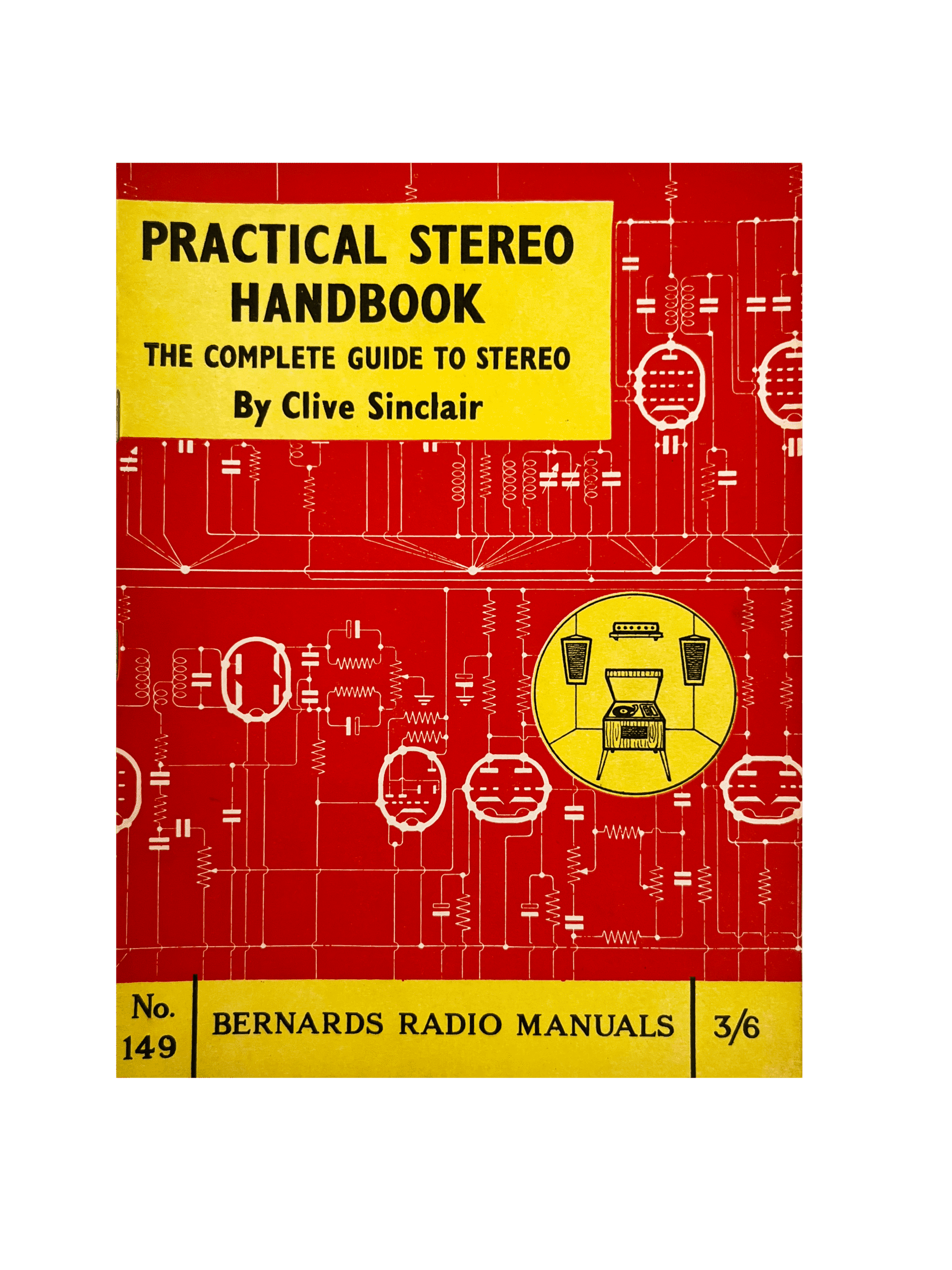
Publication: Practical Stereo Handbook, Book 1, nº 149, “The Complete Guide to Stereo”
Series: Bernards Radio Manuals
Edition: 1966 Reprint (First Published 1959)
General Editor: Clive Sinclair
Edited by Clive Sinclair, this handbook introduced hobbyists to stereophonic sound at a time when stereo was replacing mono as the standard format. It explained the principles of stereo equipment, from loudspeaker placement to amplifiers and pick-ups, and aimed to make new technology accessible to a wide audience. Part of the long-running Bernards Radio Manuals series, it reflected Sinclair’s early association with practical guides for electronics enthusiasts.
Contents: Stereo Language; Positioning the Loudspeakers; Headphones for Stereo; Loudspeaker Stereo Amplifiers; Stereo Pick-ups.
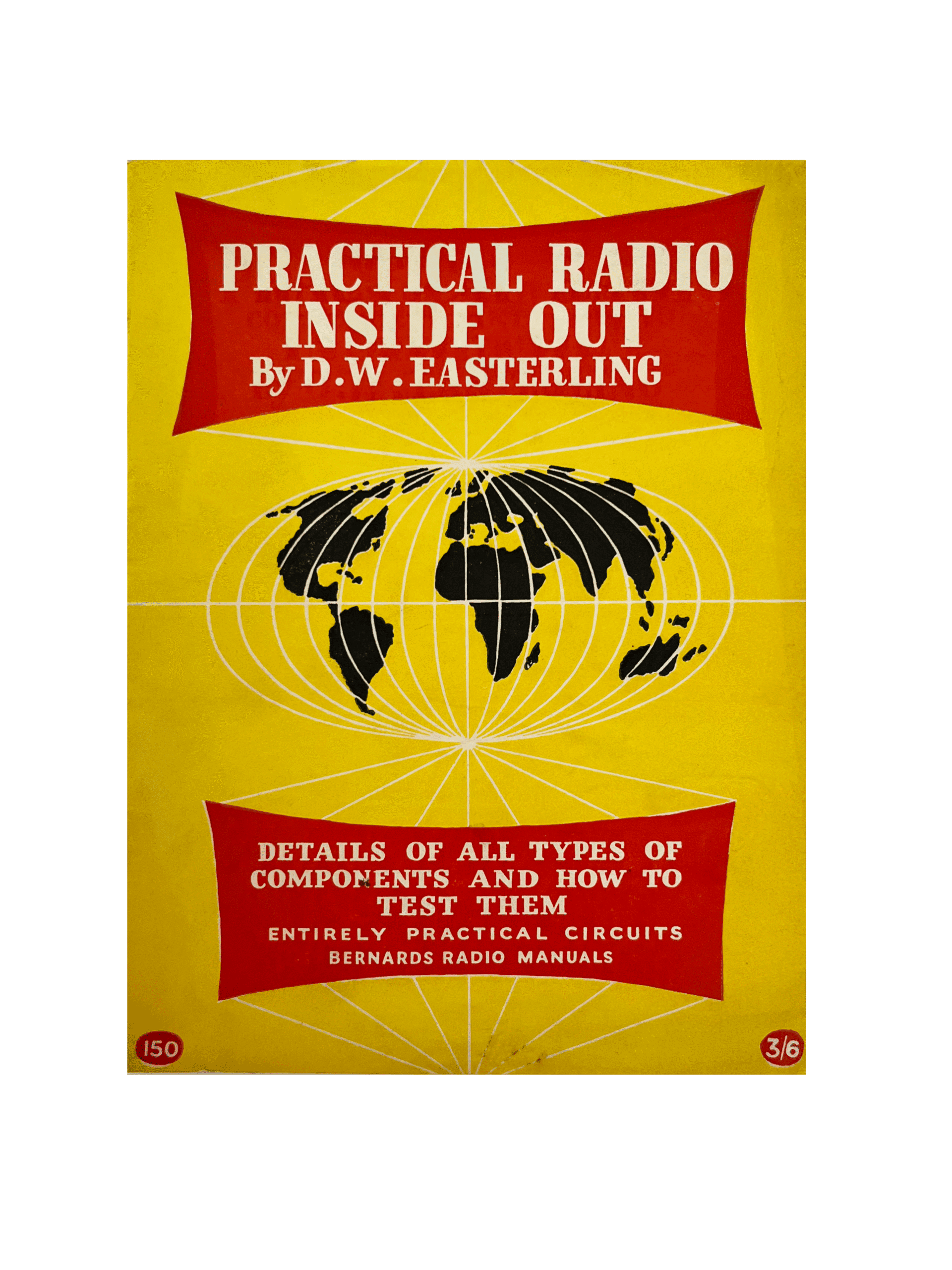
Publication: Practical Radio Inside Out, nº 150, “Details of all Types of Components and How to Test Them”
Series: Bernards Radio Manuals
Edition: 1st, 1959
Author: D. W. Easterling (Dennis William Easterling)
General Editor: Clive Sinclair
This handbook introduced readers to the functions of electronic components and methods for testing them. Written by D.W. Easterling and edited by Clive Sinclair, it was one of many concise and practical titles published in London by Bernards (Publishers) Ltd in their popular Radio Manuals series, which offered practical guides on a wide range of technical subjects.
Contents: Resistance and Resistors; Capacitance and Capacitors; Inductance, Chokes and Transformers; H.F. Components; Multi-purpose Test Gear.
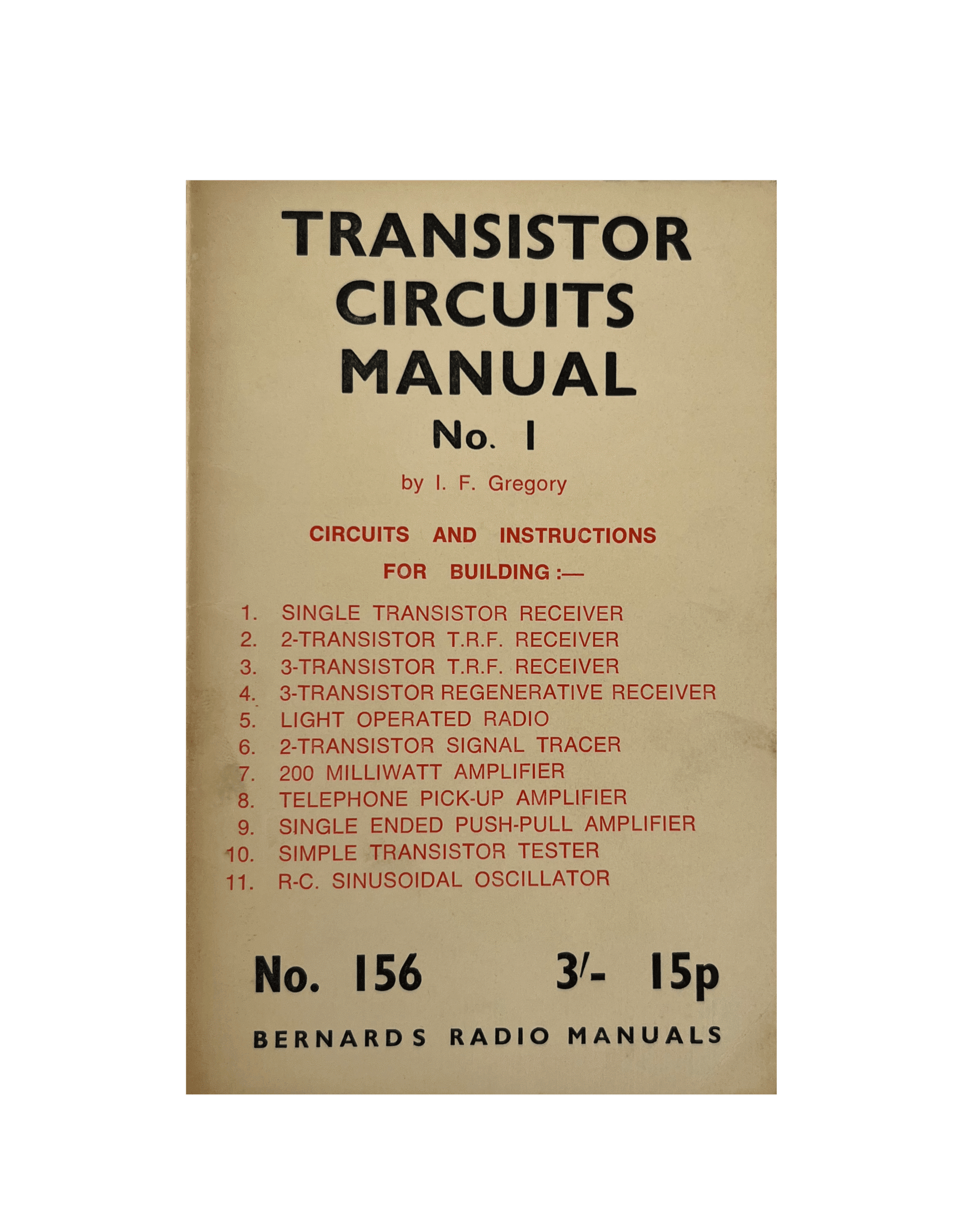
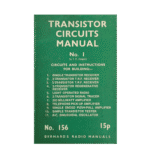
1973 Reprint
Publication: Transistor Circuits Manual Nº 1, nº 156, “Circuits and Instructions for Building”
Series: Bernards Radio Manuals
Edition: 1970 Reprint (First Published 1959)
Author: I. F. Gregory (Ivan Frederick Gregory)
General Editor: Clive Sinclair
This manual introduced hobbyists to building circuits with transistors, a relatively recent technology for hobbyists at the time. Edited by Clive Sinclair, it was written by Ivan Frederick Gregory, described in the preface as “one of the first people ever to build a transistor superhet.” Aimed at beginners but also useful to more advanced readers, it included clear instructions and practical designs. Sinclair emphasised that every project had been tested to ensure reliability and ease of use.
Contents: One transistor receiver; Two transistor T.R.F. receiver; Three transistor T.R.F. receiver; Three transistor regenerative receiver (two pre-tuned switched stations); Selenium solar cells to operate regenerative receiver; Two transistor signal tracer; 200 milliwatt amplifier and uses; Telephone pick-up amplifier; Single ended push-pull output amplifier for pocket radios; Simple transistor tester; R-C sinusoidal oscillator.
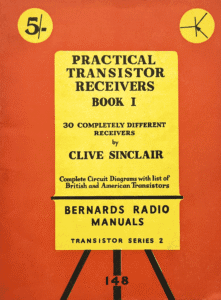
Publication: Practical Transistor Receivers, Book 1, nº 148, “30 Completely Different Receivers”
Series: Bernards Radio Manuals
Edition: 1961 Reprint (First Published 1959)
General Editor: Clive Sinclair
This handbook presented thirty receiver circuits, ranging from simple crystal diode sets to advanced super-regenerative designs. It introduced hobbyists to the practical possibilities of transistors, then still new to radio construction. Each section explained the advantages and limitations of different receiver types, including sensitivity, selectivity, and tuning stability. Edited by Clive Sinclair, the book also included international transistor lists, helping constructors select suitable components at a time when many devices were only just reaching the retail market.
Contents: Diode plus Amplifier Circuits; Regenerative Receivers; T.R.F. Receivers; Super Regenerative Receivers; Lists of British, American and European Transistors.
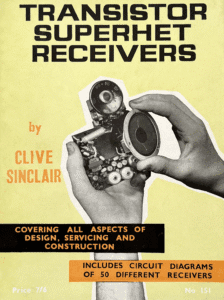
Publication: Transistor Superhet Receivers, nº 151
Series: Bernards Radio Manuals
Edition: 1962 Reprint (First Published 1960); 1964 Reprint
General Editor: Clive Sinclair
This book explored the principles and practice of building transistorised superheterodyne (or “superhet”) radios, a design noted for its improved sensitivity and selectivity. Clive Sinclair, as series editor, combined explanations of the circuit stages—such as frequency changers, amplifiers, and detectors—with surveys of available kits and commercial models from Britain, the United States, Japan, and continental Europe. It concluded with detailed transistor specifications and equivalents, providing constructors with practical reference material for an expanding international market.
Contents: The Transistor Superhet; Transistor Superhet Kits; British Receivers; American Receivers; Japanese Receivers; French and German Receivers; Transistors used in Superhets.
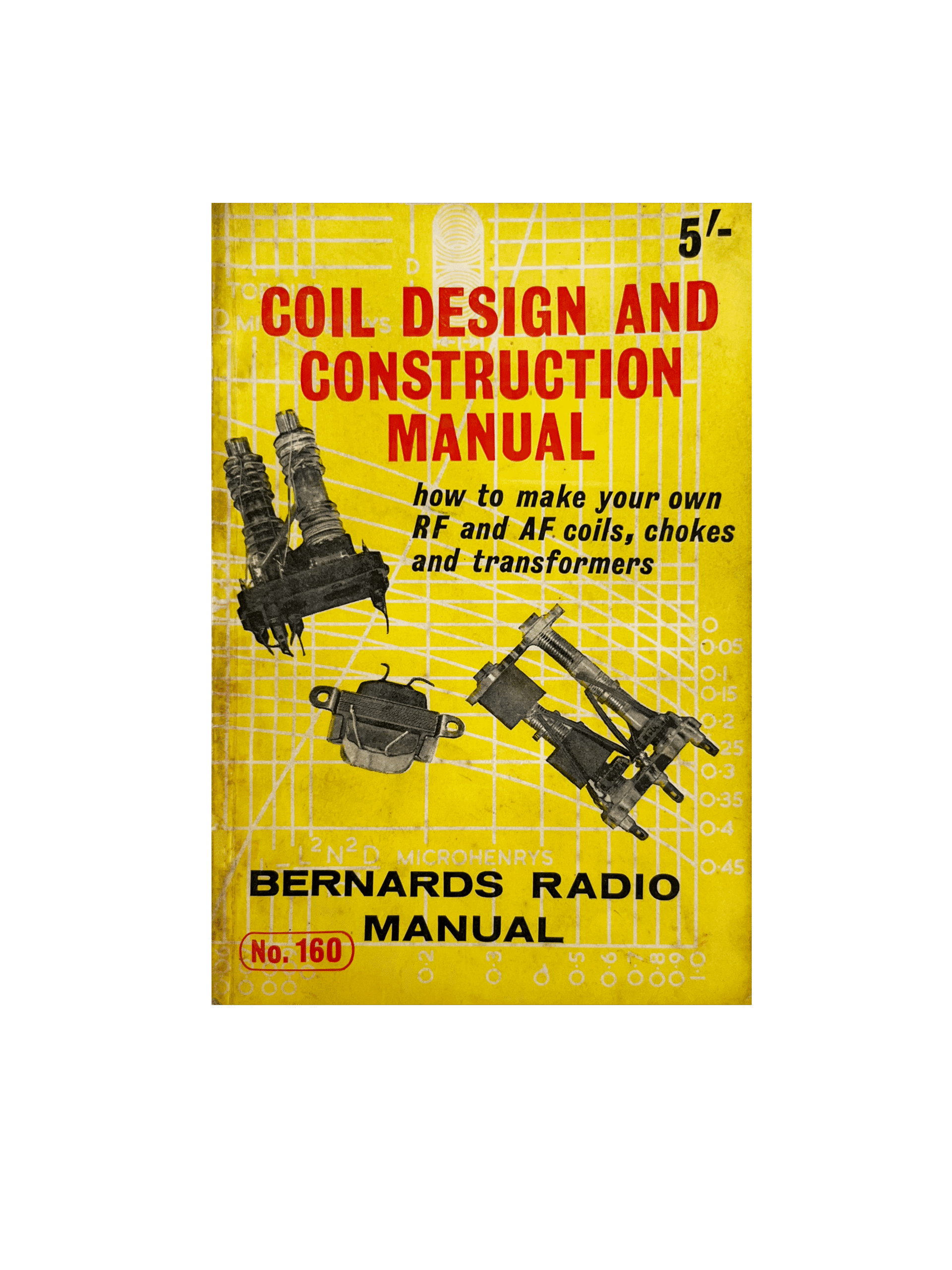
Publication: Coil Design and Construction Manual, nº 160, “How to make your own RF and AF Coils, Chokes and Transformers”
Series: Bernards Radio Manuals
Edition: 1st, 1960
Author: Bernard Babani
General Editor: Clive Sinclair
This manual guided enthusiasts through the design and winding of coils, chokes, and transformers, essential components in radio and audio circuits. Written by Bernard Babani and edited by Clive Sinclair, it combined theory with step-by-step construction advice. Like other volumes in the series, it encouraged readers to try practical projects at home and even invited new contributors to submit manuscripts for future manuals.
Contents: Radio frequency coil types and characteristics; The design and construction of R.F. coils; The design and construction of H.F. chokes; The design and construction of power transformers; The design and construction of low frequency chokes; Chokes carrying direct current; Inter-valve transformers carrying direct current; Output transformers for single valves; Air gap determination; Push-pull output and loudspeaker transformers; Input transformers (parallel fed); Push-pull inter-valve transformers; Construction details; Methods of testing; Calculation of wire gauge; Appendix I: S.W.G. tables; Appendix II: Television Coil Data.
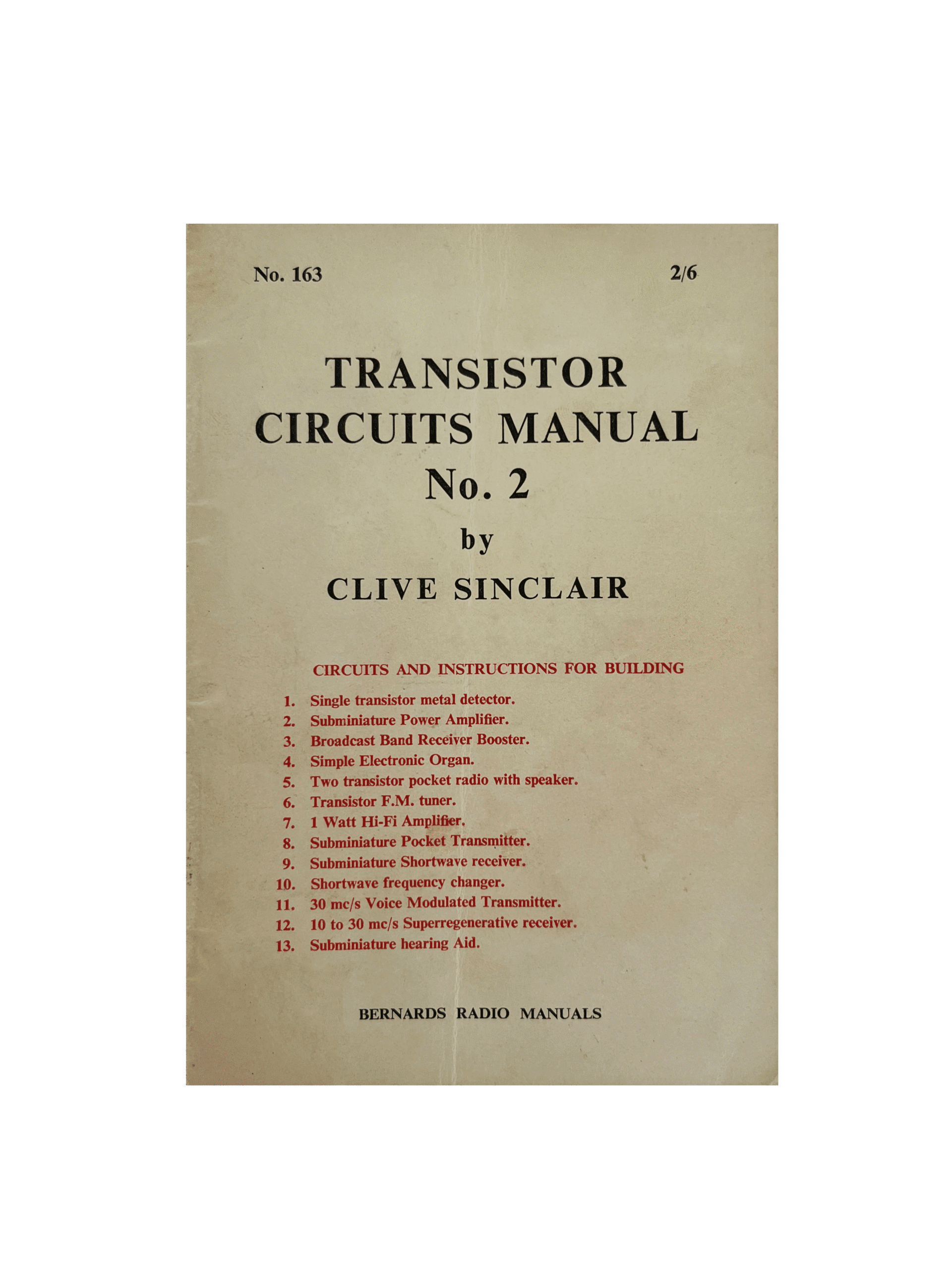
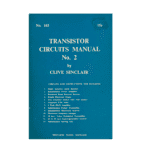
1972 Reprint
Publication: Transistor Circuits Manual Nº 2, nº 163, “Circuits and Instructions for Building”
Series: Bernards Radio Manuals
Edition: 1st, 1960; 1972 Reprint; 1973 Reprint
General Editor: Clive Sinclair
This second volume followed the success of Transistor Circuits Manual No. 1 and reflected rapid advances in transistor technology. New devices for high-frequency use allowed for projects such as an FM tuner, while miniature components made hearing aids and pocket radios possible. The introduction noted the surprising performance achievable from simple designs, including a two-transistor radio able to drive a loudspeaker without an external aerial.
Contents: Single Transistor Metal Detector; Subminiature Power Amplifier; Broadcast Band Receiver Booster; Simple Electronic Organ; Two Transistor Pocket Radio with Speaker; Transistor F.M. Tuner; Watt Hi-Fi Amplifier; Subminiature Pocket Transmitter; Subminiature Shortwave Receiver; Shortwave Frequency Changer; 30 mc/s Voice Modulated Transmitter; 10 to 30 mc/s Super-regenerative Receiver; Subminiature Hearing Aid.
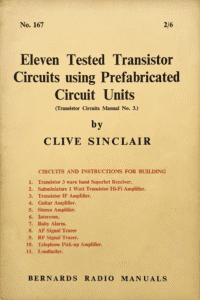
Publication: Transistor Circuits Manual Nº 3, nº 167, “Eleven Tested Transistor Circuits using Prefabricated Circuit Unit”
Series: Bernards Radio Manuals
Edition: 1st, 1960
General Editor: Clive Sinclair
This manual highlighted the new availability of prefabricated transistor modules, manufactured by Görler in Germany, which allowed hobbyists to construct advanced equipment with greater ease and reliability. Projects included a multi-band shortwave superhet receiver, a one-watt hi-fi amplifier, and practical applications such as intercoms and baby alarms. Edited by Clive Sinclair, the book emphasised how prefabricated units could reduce cost and complexity while enabling home constructors to achieve performance previously out of reach.
Contents: Superhet Receiver; Hi-Fi Amplifier; Guitar Amplifier; Stereo Amplifier; Intercom; Baby Alarm; Signal Tracers; Telephone Pick-up Amplifier; Loudhailer; I.F. Amplifier.
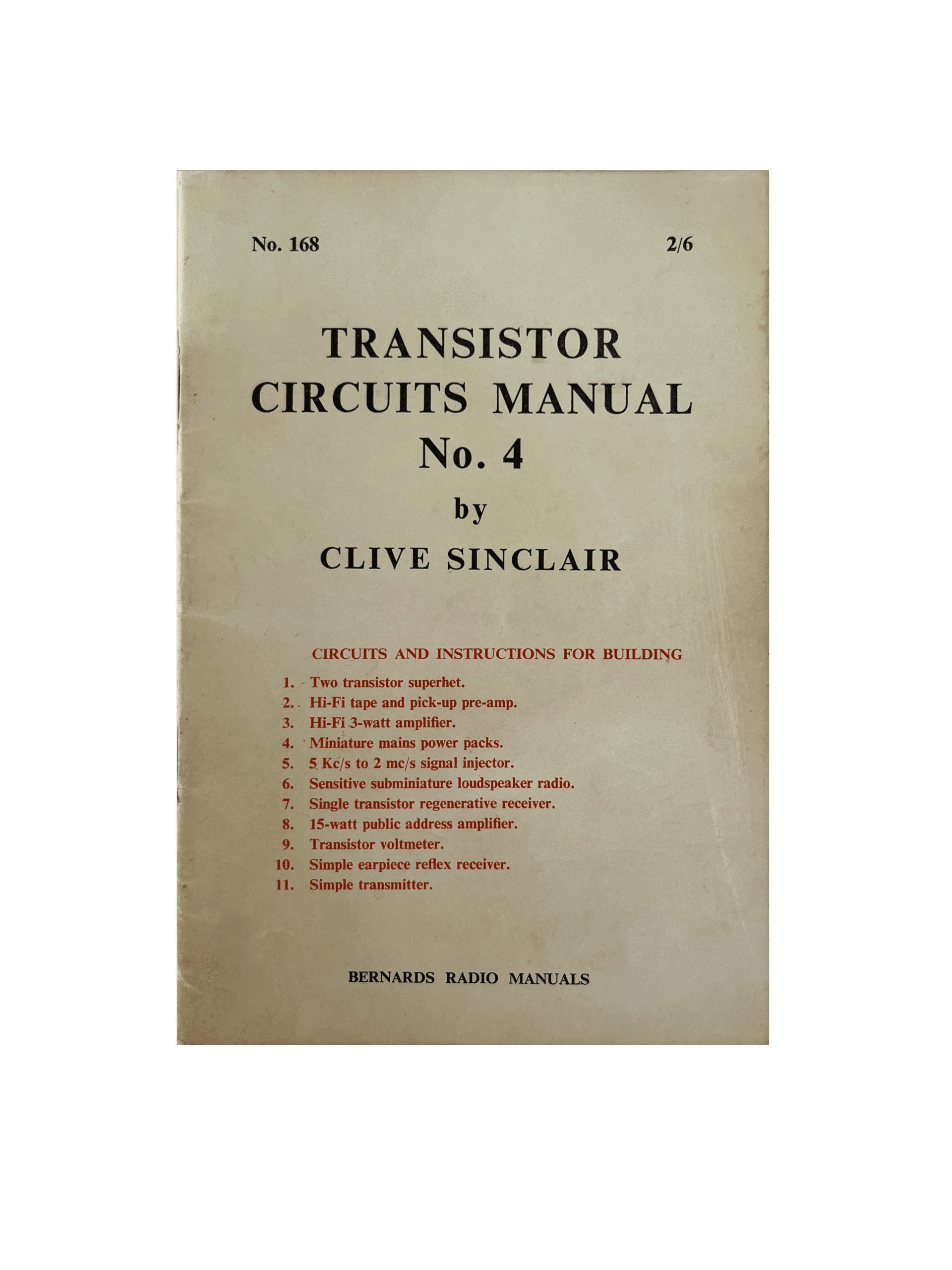
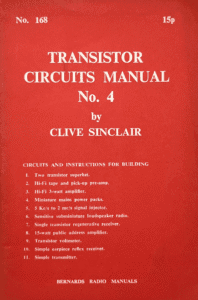
1973 Reprint
Publication: Transistor Circuits Manual Nº 4, nº 168, “Circuits and Instructions for Building”
Series: Bernards Radio Manuals
Edition: 1st, 1960
Issued in 1960, this was the fourth volume in the popular Transistor Circuits Manual series. It reflected how quickly new components were reshaping home electronics, highlighting the affordable OC169 transistor and its many applications. The introduction also revealed a dialogue with readers, noting the popularity of pocket radios and encouraging feedback for future volumes. Projects included receivers, amplifiers, and test gear, showing how transistors were moving from novelty devices into mainstream domestic equipment.
Contents: Two Transistor Superhet; Hi-Fi Tape and Pick-Up Pre-amplifier; Hi-Fi 3-watt Amplifier; Miniature Mains Power Packs; Kc/s to 2 mc/s Signal Injector; Sensitive Subminiature Loudspeaker Radio; “Mighty Atom” Single Transistor Receiver; 15-Watt Public Address Amplifier; Transistor Voltmeter; Simple Earpiece Reflex Receiver; Simple Transmitter.
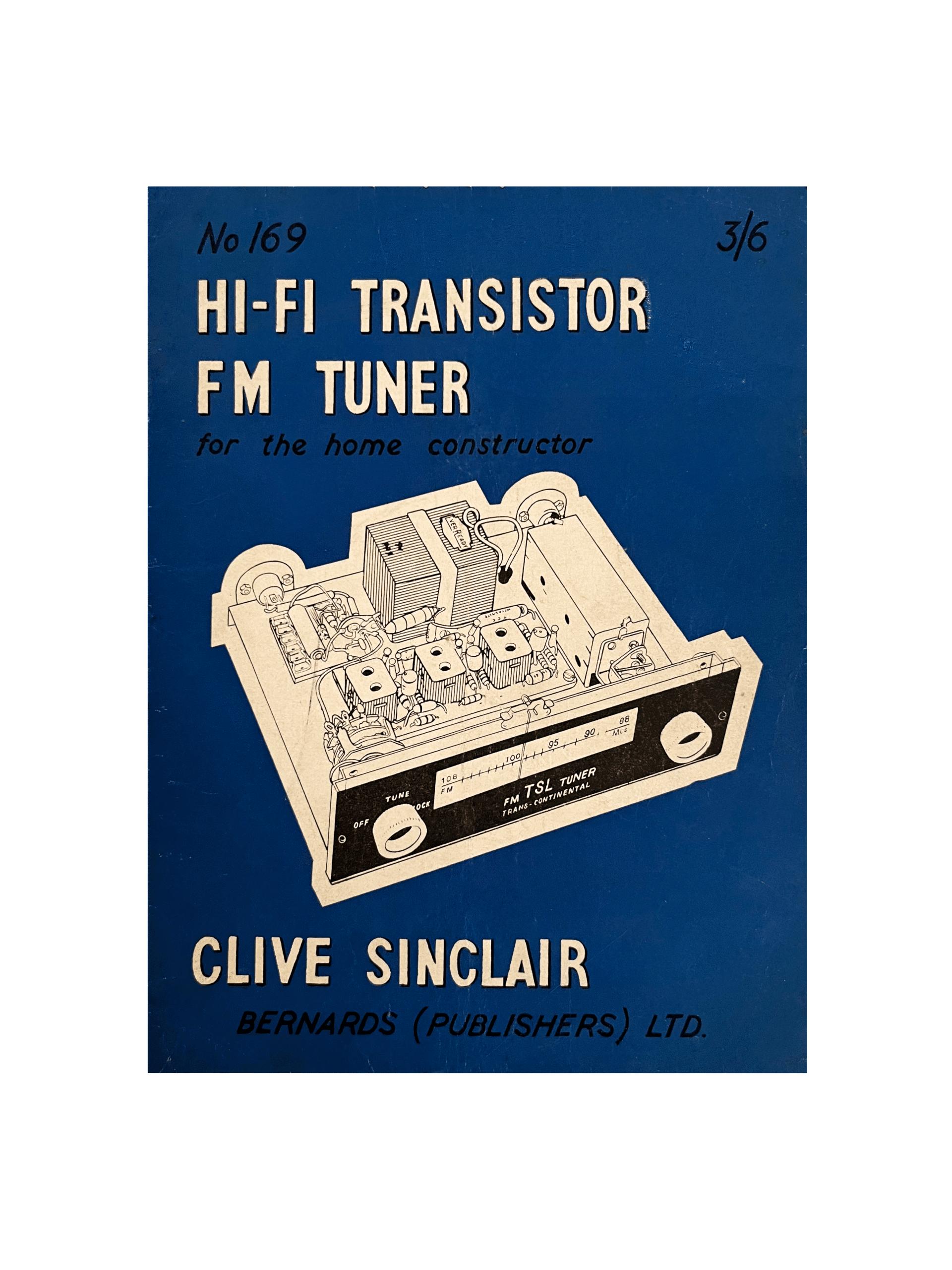
Publication: Hi-Fi Transistor FM Tuner, nº 169, “For the Home Constructor”
Series: Bernards Radio Manuals
Edition: 1st, 1961
General Editor: Clive Sinclair
This handbook explained how to build a high-fidelity FM tuner using newly available alloy-diffused transistors, such as Mullard’s OC170 and OC171. These devices enabled performance that rivalled or exceeded valve tuners, with advantages including higher sensitivity, automatic frequency control, portability, and long battery life. Edited by Clive Sinclair, the book marks an early moment when transistors became practical for hi-fi applications, making advanced radio technology more accessible to hobbyists and constructors.
Contents: Transistor F.M. Circuitry; The Complete F.M. Tuner; Construction of the TSL F.M. Tuner; A.F. Preamplifier; F.M. Aerials; List of British F.M. Stations; List of Foreign F.M. Stations.
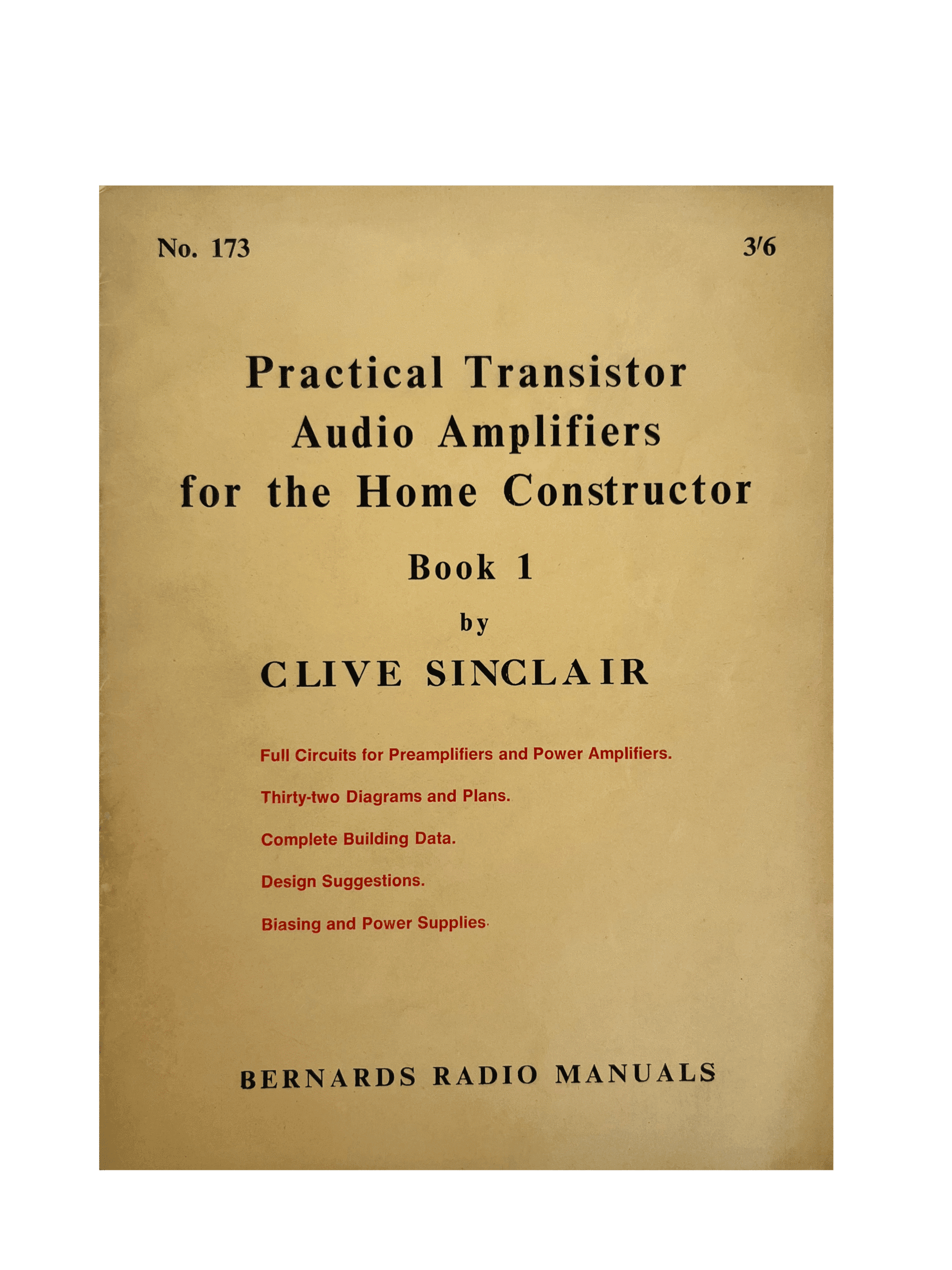
Publication: Practical Transistor Audio Amplifiers for the Home Constructor, Book 1, nº 173
Series: Bernards Radio Manuals
Edition: 1968 Reprint (First Published 1961)
General Editor: Clive Sinclair
This handbook introduced hobbyists to designing and building transistor audio amplifiers at a time when transistors were becoming competitive with valves in high-fidelity and public-address systems. It explained biasing, stabilisation, and coupling methods in clear terms, while providing circuits across a wide power range. Edited by Clive Sinclair, the book encouraged readers not only to follow supplied designs but also to create their own amplifiers using the principles set out.
Contents: Biasing and Stabilisation; Interstage Coupling; Transistor Preamplifiers; Power Output Stages.
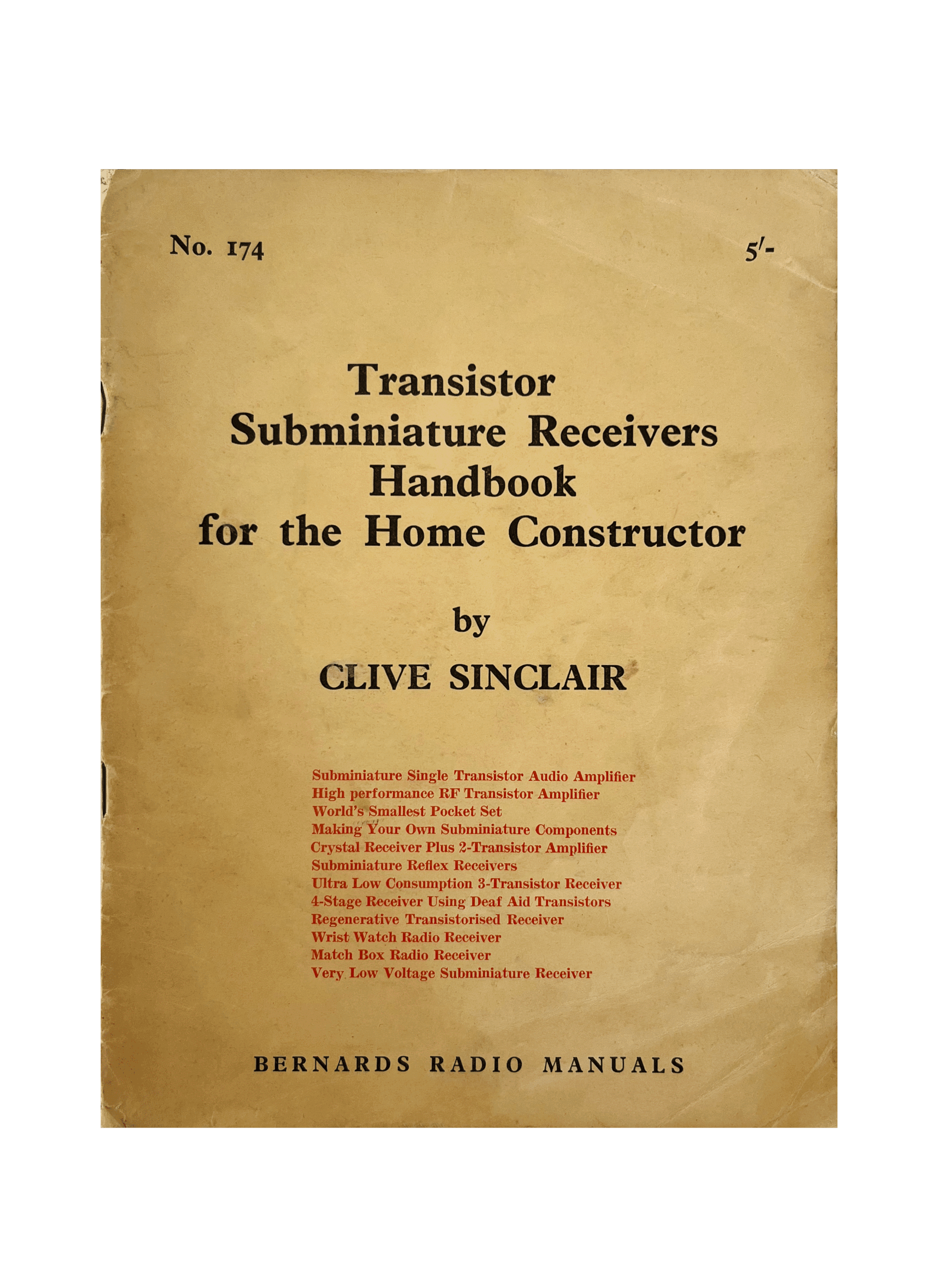
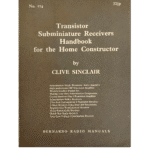
1972 Reprint
Publication: Practical Subminiature Receivers Handbook for the Home Constructor, nº 174
Series: Bernards Radio Manuals
Edition: 1st, 1961
General Editor: Clive Sinclair
This handbook explored the challenge of building genuinely pocket-sized radios. It introduced techniques for miniaturisation, including the use of printed circuit boards and novel circuitry methods. Sinclair presented circuits for regenerative and reflex receivers, many unpublished elsewhere. At a time when most so-called “pocket radios” were still bulky, this book encouraged hobbyists to construct smaller sets that remained practical for everyday listening.
Contents: Techniques in Receiver Construction; Components; Subminiature Circuitry; General Receiver Designs; Regenerative Receivers; Reflex Receivers.
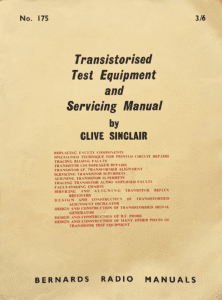
Publication: Transistorised Test Equipment and Servicing Manual, nº 175
Series: Bernards Radio Manuals
Edition: 1st, 1961
General Editor: Clive Sinclair
This manual addressed the growing need for specialised servicing of transistor radios, which required different methods from traditional valve sets. It explained common circuit patterns, tackled unusual imported designs, and provided guidance on diagnosing faults. Edited by Clive Sinclair, the book also included circuits for affordable test equipment—such as oscillators, signal injectors, and probes—allowing hobbyists to build their own service tools. Its practical approach helped both newcomers and experienced engineers adapt to the rapid shift from valve to transistor technology.
Contents: General Fault-Finding Principles; Components Used in Transistor Radios: Variable Resistors, Preset Potentiometers, Thermistors, Fixed Capacitors, Tuning Capacitors, Loudspeakers, Earpieces, Aerial Coils, I.F. Transformers and Oscillator Coils, A.F. Transformers, Batteries, Diodes; Servicing Transistor Superhets: 6-Transistor Superhet, A.F. Transistors, Servicing Procedure, Faultfinding Chart, Converter Stage, First I.F. Stage, Second I.F. Stage, Diode Detector, A.F. Driver Stage, A.F. Output Stage, Alternative Circuitry, 3-Transistor Superhets, 2-Transistor Reflex Receiver; Transistorised Test Equipment: 800 c/s Phase Shift Oscillator, Signal Injector, Signal Tracer, Loudspeaker Signal Tracer, R.F. Probe; Commercial Transistor Receiver Servicing; Transistor and Component Substitution.
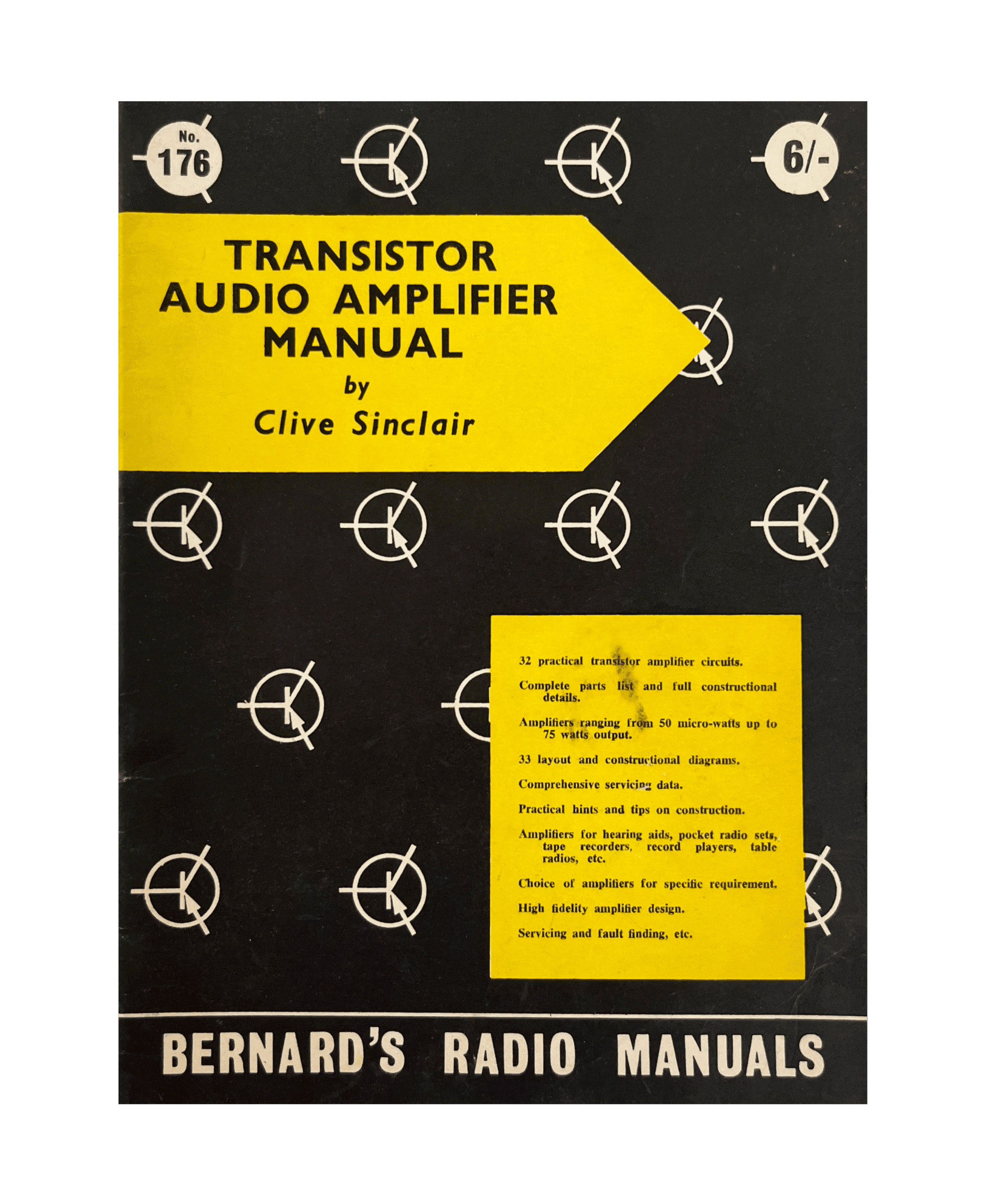
Publication: Transistor Audio Amplifier Manual, nº 176
Series: Bernards Radio Manuals
Edition: 1966 Reprint (First Published 1962)
General Editor: Clive Sinclair
Issued as a sequel to Sinclair’s earlier Practical Transistor Audio Amplifiers, this manual concentrated on complete circuit designs rather than theory. Covering outputs from a few milliwatts to 25 watts, it provided builders with practical amplifier projects ranging from low-power domestic sets to higher-power applications intended for larger audiences. Notably, some examples used transistors not yet on the market, included “for the sake of completeness” so the book would remain up to date. This 1966 reprint, with its black cover, reflects the manual’s continued demand.
Contents: Amplifiers up to 10 mW; 10–100 mW; 100 mW–1 W; 1–25 W.
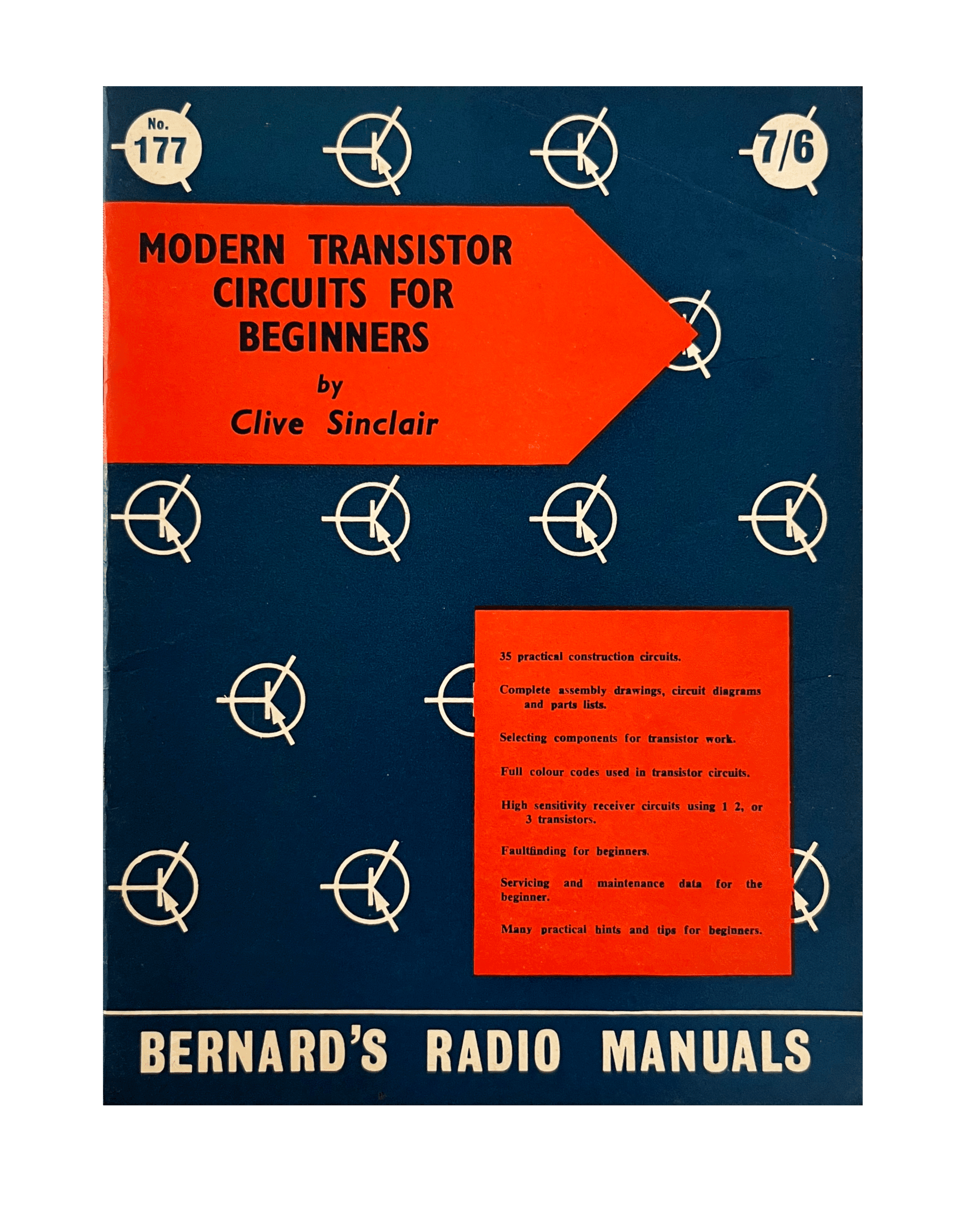
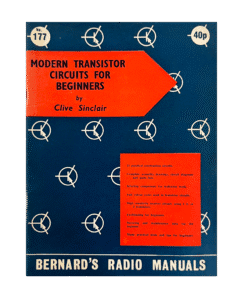
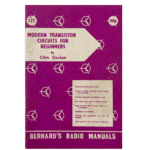
1971 Reprint 1974 Reprint
Publication: Modern Transistor Circuits for Beginners, nº 177
Series: Bernards Radio Manuals
Edition: 1967 Reprint (First Published 1962)
General Editor: Clive Sinclair
This handbook offered straightforward introductions to transistor circuits, aimed especially at beginners in electronics. Edited by Clive Sinclair, it explained how to build and understand basic designs at a time when transistors were steadily replacing valves in hobby projects. Like other Bernards Radio Manuals, it encouraged readers to experiment and even submit manuscripts for future volumes. This edition covers essential components and includes circuits for radios and receivers that could be built at home.
Contents: The components used in transistor circuits; Simple transistor radio circuits; Regenerative and reflex receivers.
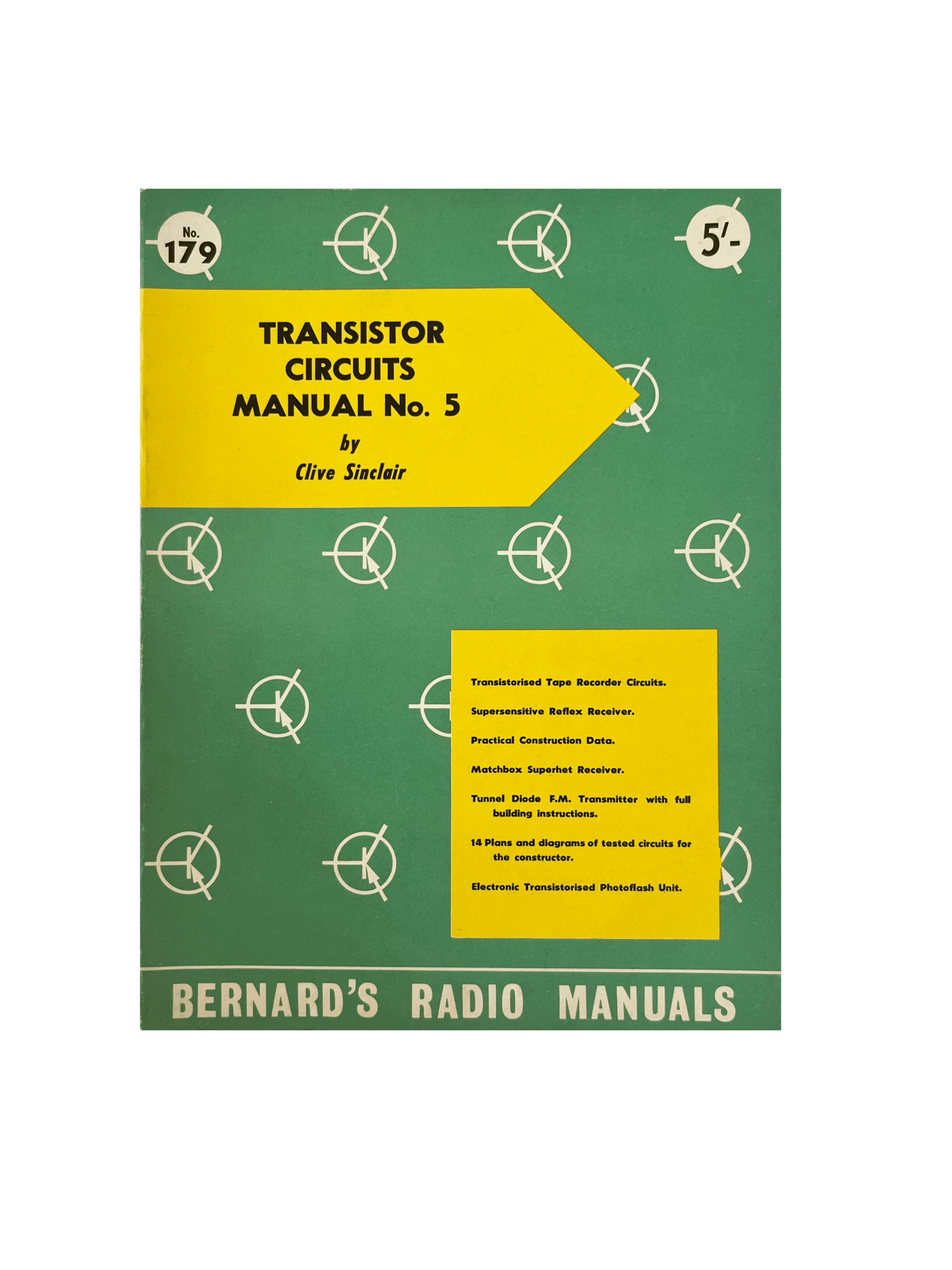
Publication: Transistor Circuits Manual Nº 5, nº 179
Series: Bernards Radio Manuals
Edition: 1967 Reprint (First Published 1963)
General Editor: Clive Sinclair
This fifth volume in the Transistor Circuits Manual series marked a change in format, doubling the page size to show larger, clearer diagrams. Edited by Clive Sinclair, it reflected both reader requests and emerging technologies. Alongside popular radio and tape-recorder projects, it introduced circuits using tunnel diodes, then a new and experimental device. These handbooks linked home constructors to the latest components becoming available in Britain’s electronics market.
Contents: 2 Watt Tape Erase and Bias Oscillator; 50mW Bias Oscillator; Transistorised Record/Playback Amplifier; Transistorised Electronic Photo Flash; High Sensitivity Double Tuned Reflex Receiver; Simplified Reflex Receiver; Four Transistor Pocket Superhet; Matchbox High Sensitivity Superhet; Tunnel Diode F.M. Transmitter.
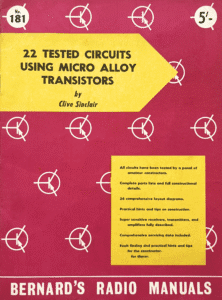
Publication: 22 Tested Circuits Using Micro Alloy Transistors, nº 181
Series: Bernards Radio Manuals
Edition: 1st, 1963; May 1963 Reprint
General Editor: Clive Sinclair
This manual introduced hobbyists to the potential of micro-alloy transistors (MATs), a newer type noted for higher frequency performance and low noise. Edited by Clive Sinclair, it explained specifications, construction methods, and techniques for applying MATs to both common and advanced circuits. With 22 practical designs, it enabled readers to build amplifiers, receivers, and transmitters, reflecting the rapid pace of innovation in early transistor electronics.
Contents: An introduction to the MAT: MAT specifications, encapsulation and lead connections; Circuit techniques with Micro Alloy Transistors: amplifier circuits, oscillator circuits, frequency changers, R.F. and I.F. amplifiers, reflex amplifiers, detectors and regenerative detectors; Practical MAT circuits: very high gain 25 mW amplifier, three very low noise pre-amplifiers, single transistor phase shift oscillator, two reflex receivers, regenerative receivers, short wave transmitter, synchronous detector, F.M. tuner, 24 FM/VHF transmitter, sub-miniature radio control receiver, superhet receivers using MATs.

Publication: How to Receive Foreign Television Programmes on Your Television Set by Simple Modifications, nº 183
Series: Bernards Radio Manuals
Edition: 1st, 1963
Author: W. J. West
General Editor: Clive Sinclair
This handbook introduced television enthusiasts to the hobby of long-distance reception, known as “DX-ing.” It explained how to adapt older “Band I” sets to pick up foreign broadcasts carried by Sporadic “E” propagation. Illustrated with photographs of actual overseas transmissions received in England, it offered practical guidance on aerials, set modification, and screen photography. Edited by Clive Sinclair, it reflects a period when television itself was still relatively new, and experimental reception carried the excitement of discovery.
Contents: Why Sporadic “E” Reception is Possible; Channels Receivable on Band 1; Modifying an Old “Band I Only” Television Set for Experiments in Sporadic “E” Reception; Photographic Section showing 28 actual photographs of foreign programmes received in England; Aerials Best Suited for Sporadic “E” Television Reception; Photographing Direct from the T.V. Screen; Addresses of the European Television Services for programme confirmation purposes.
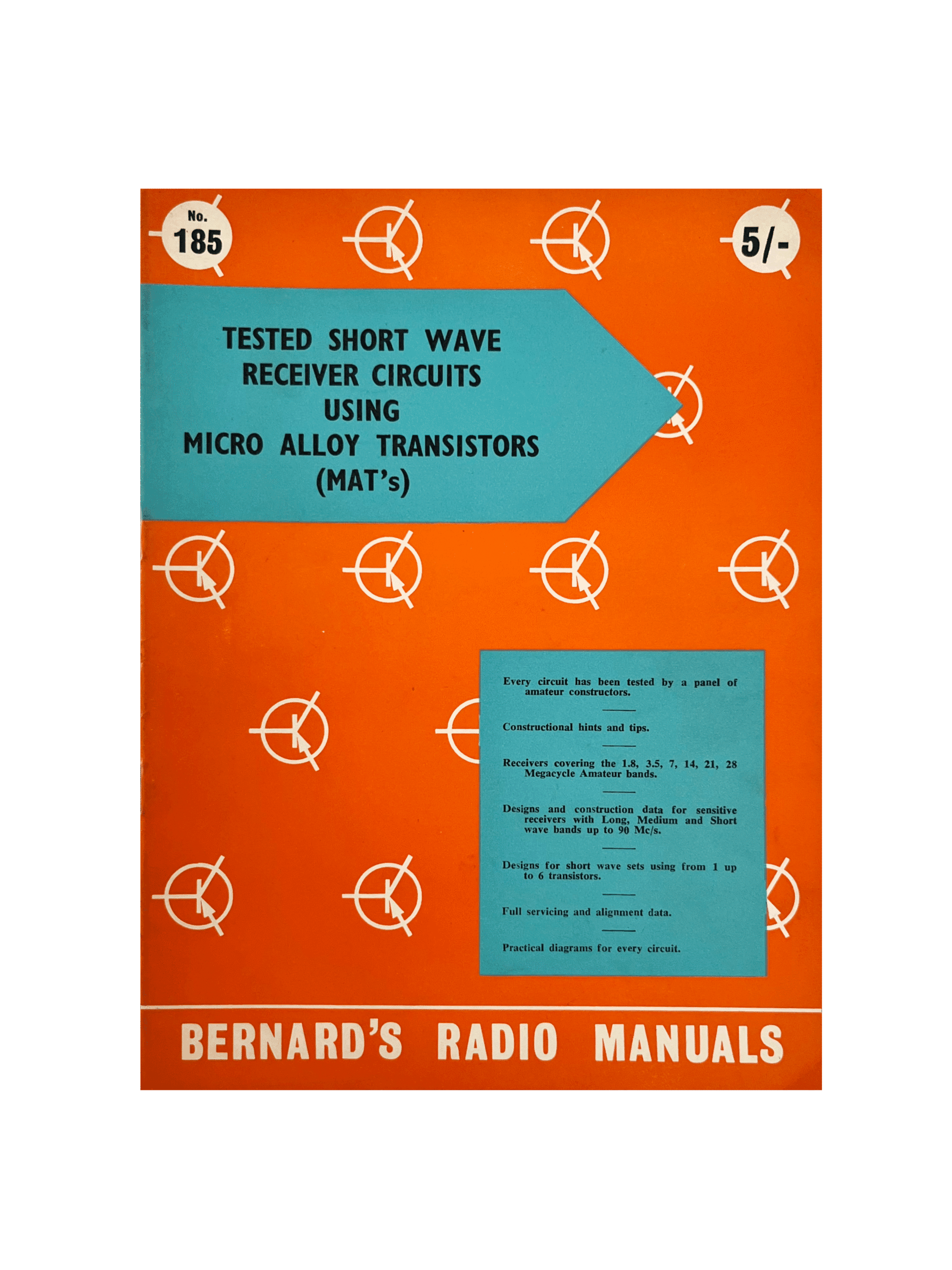

1971 Reprint
Publication: Tested Short Wave Receiver Circuits Using Micro Alloy Transistors (MAT’s), nº 185
Series: Bernards Radio Manuals
Edition: 1st, 1963
General Editor: Clive Sinclair
This handbook presented a series of short-wave radio receiver circuits for hobbyists, from simple one-transistor designs to more advanced six-transistor sets. Distinctively, every circuit used Sinclair Micro Alloy Transistors (MATs), promoted here as affordable, reliable components for high-frequency applications. The volume reflects Sinclair’s dual role in both publishing and transistor manufacture, and encouraged readers to build equipment capable of receiving international broadcasts on sets constructed at home.
Contents: Single Transistor Reflex Shortwave Receiver; Two Transistor Receiver for use up to 88 Mc/s; Two Transistor Reflex Shortwave Receiver; Two Transistor Super-Regen Receiver; Three Transistor Super-Regen Receiver; Four Transistor Super-Regen for 27 Mc/s; Transistorised Signal Booster for 20–50 metres; Six Transistor TRF Receiver for 10 metres; Six Transistor All Wave Superhet.
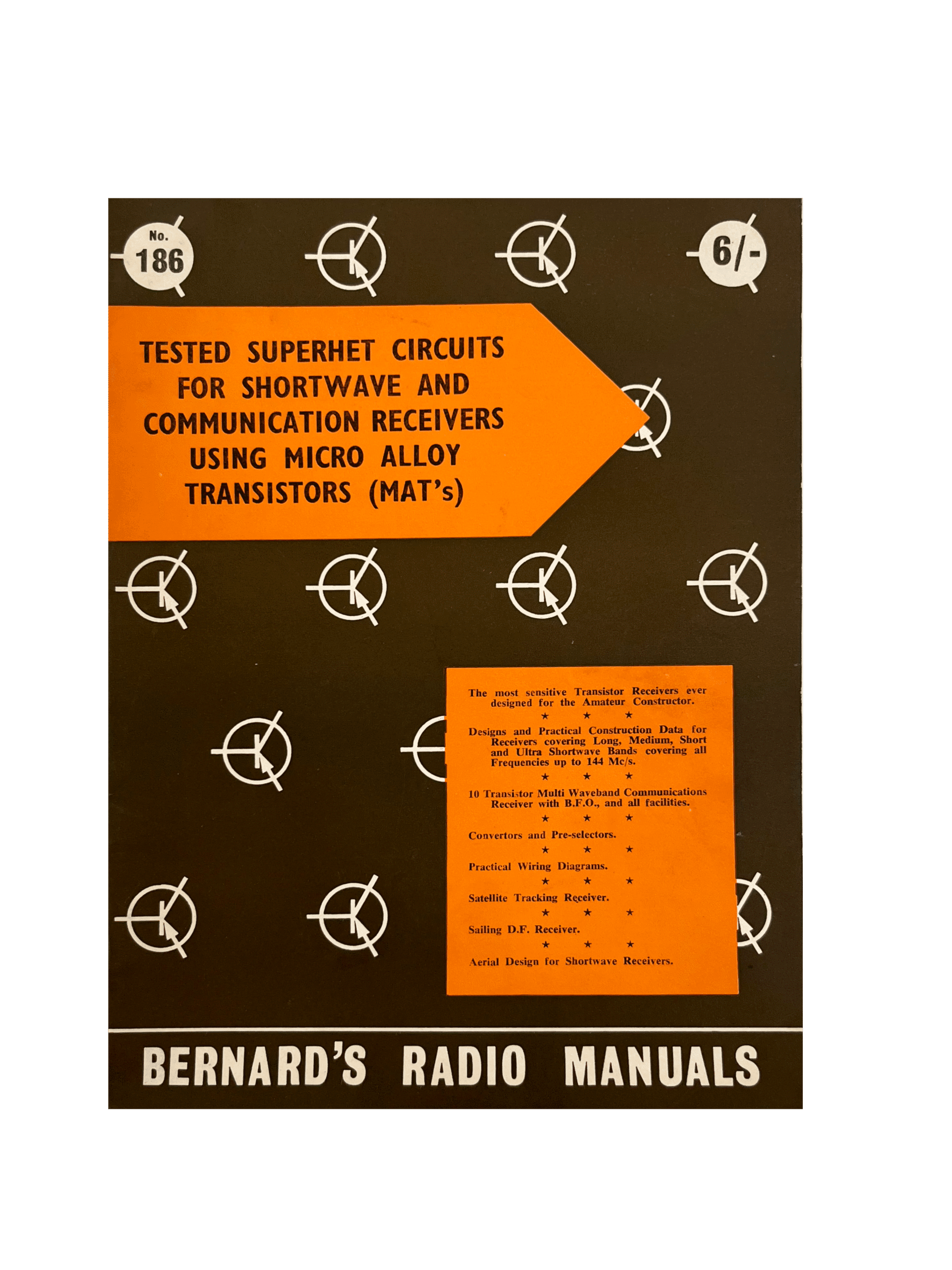
Publication: Tested Superhet Circuits for Shortwave and Communication Receivers Using Micro Alloy Transistors, nº 186
Series: Bernards Radio Manuals
Edition: 1st, 1963
General Editor: Clive Sinclair
This manual presented advanced shortwave receiver designs for dedicated hobbyists and amateur radio operators. It built on an earlier Bernards title (no. 185) but introduced more complex superheterodyne circuits using seven to ten transistors. All examples employed Sinclair Micro Alloy Transistors, reflecting Sinclair’s parallel role as both editor and component supplier. The book offered projects ranging from communications receivers to satellite tracking circuits, aiming to give enthusiasts reliable, high-performance sets without requiring specialist test equipment.
Contents: Seven Transistor Superhet; Five waveband Transistor Receiver; Eight Transistor Receiver with R.F. stage; Ten Transistor Communications Receiver; Communications Mixer Unit; Oscillator Unit; Beat Frequency Oscillator; Audio Amplifier; Four Waveband Converter; 144 Mc/s Converter; 136 Mc/s Satellite Tracking Receiver; D.F. Receiver for Boat use; Shortwave Transistor Receiver Aerials; Etched Circuits.
